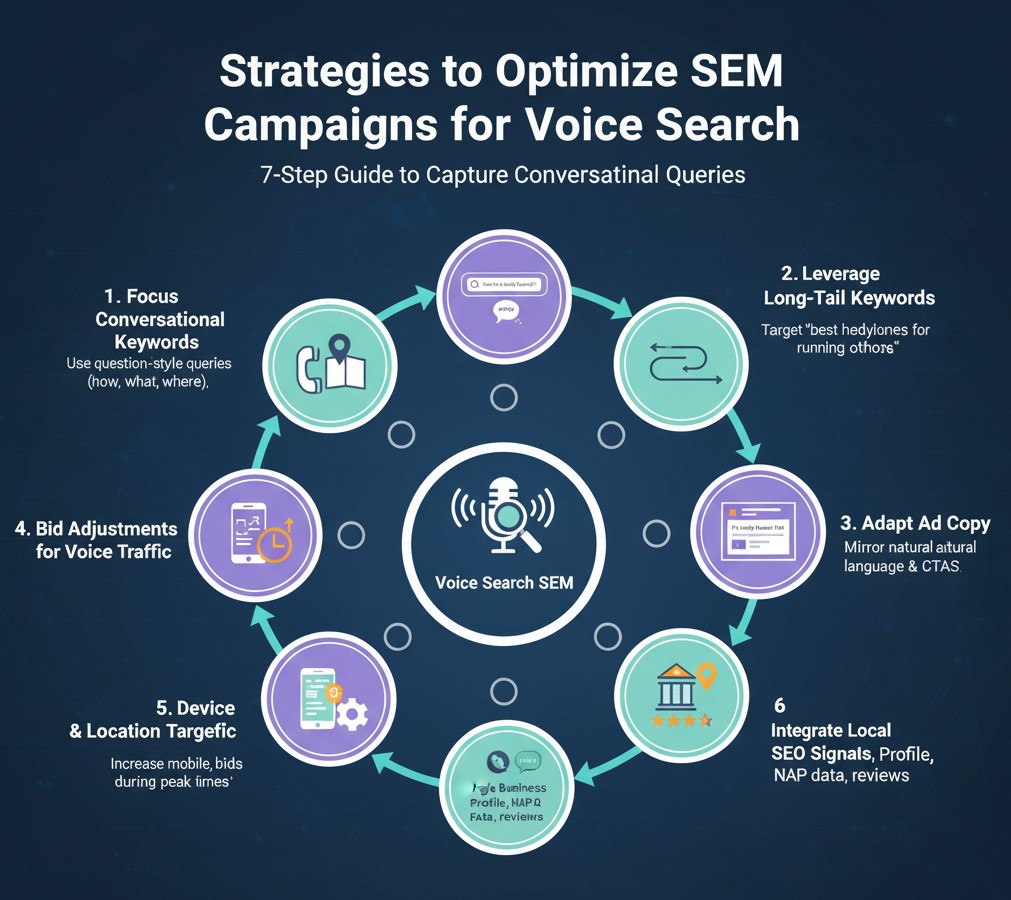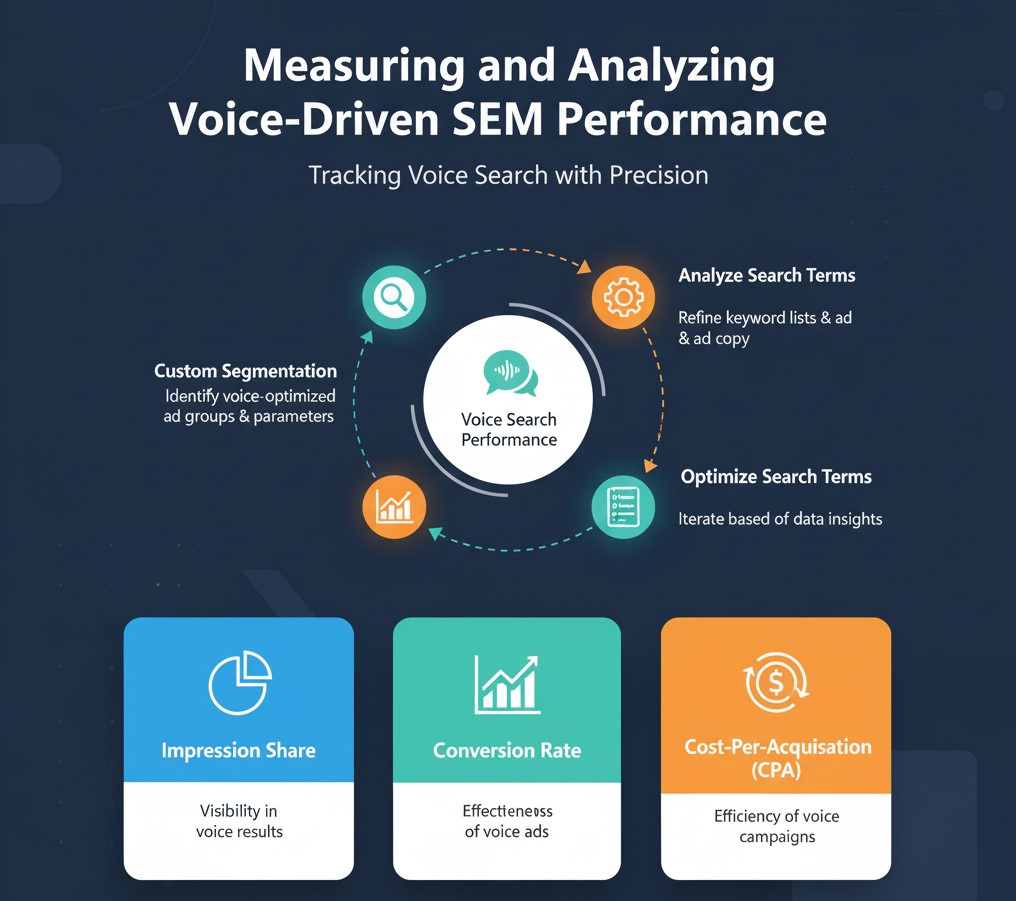
As voice-activated devices and virtual assistants become integral to daily life, search engine marketing (SEM) professionals must adapt their strategies to capture voice-driven queries. This comprehensive guide explores the rise of voice search, highlights key differences from text-based searches, and provides actionable tactics to optimize your SEM campaigns for voice. By implementing these approaches, you can stay ahead of the curve and reach users as they ask questions out loud.
Understanding the Rise of Voice Search
Voice search usage has surged, driven by the popularity of smart speakers, voice assistants on smartphones, and in-car voice controls. According to recent studies, over 50% of all searches will be voice-based by 2025. Consumers appreciate the hands-free convenience and speed of speaking rather than typing. For SEM advertisers, this shift presents an opportunity—and a challenge—to tailor campaigns that meet the unique requirements of spoken queries.
Key Differences Between Text and Voice Search
- Conversational Queries: Voice searches are phrased in natural language, often as questions or full sentences—e.g., “What’s the best Italian restaurant near me?” versus typing “Italian restaurant near me.”
- Longer Keywords: Spoken queries tend to be longer, featuring more words and qualifiers, which means focusing on long-tail keywords is essential.
- Local Intent: Many voice searches have local intent (“near me” queries), making local targeting and location extensions critical for success.
- Device Context: Voice searches happen on a variety of devices—smartphones, home assistants, cars—each with different user contexts and behaviors.
Strategies to Optimize SEM Campaigns for Voice Search

1. Focus on Conversational Keywords
Begin by expanding your keyword research to include natural language phrases. Use tools like Google’s Keyword Planner, AnswerThePublic, and ChatGPT to identify question-style queries that users speak aloud. Incorporate keywords that start with “how,” “what,” “where,” “when,” and “why.” Adjust your match types to capture these longer, conversational terms.
2. Leverage Long-Tail Keyword Variations
Long-tail keywords often have lower competition and higher intent. Create ad groups dedicated to these phrases, such as “best headphones for running outdoors” instead of just “headphones.” Bid strategically on these terms to balance cost-per-click (CPC) with conversion potential.
3. Adapt Ad Copy for Natural Language
Your ad headlines and descriptions should mirror conversational tone. If your target query is “How do I fix a leaky faucet,” consider headlines like “Fix a Leaky Faucet Fast” or “DIY Leaky Faucet Repair Tips.” Include clear calls-to-action that address the spoken question directly.
4. Bid Adjustments for Voice Traffic
Identify devices most associated with voice search—smartphones and smart speakers—and apply device bid adjustments. Increase bids on mobile devices during peak voice search times, such as mornings and evenings, when users are likely using voice assistants at home or on the go.
5. Device and Location Targeting
Segment your campaigns by device to tailor settings for each context. For local businesses, ensure location targeting and radius settings are fine-tuned. Use proximity bid modifiers to boost visibility for users within a specific distance of your storefront.
6. Integrate Local SEO Signals
Voice searches often include local intent. Sync your SEM efforts with your local SEO strategy by optimizing your Google Business Profile, ensuring consistent NAP (Name, Address, Phone) data across directories, and encouraging customer reviews. Use location extensions in your ads to display address and distance information directly in search results.
7. Utilize Ad Extensions Effectively
Ad extensions provide additional context and clickable links. For voice search, consider:
- Call Extensions: Enable users to call your business directly from the search results.
- Location Extensions: Showcase your address and distance to capture local queries.
- FAQ Extensions: Answer common questions directly in the ad, mirroring voice search queries.
Measuring and Analyzing Voice-Driven SEM Performance

Tracking voice search performance requires careful segmentation. Use custom labels or campaign parameters to identify voice-optimized ad groups. Monitor metrics such as impression share, click-through rate (CTR), conversion rate, and cost-per-acquisition (CPA) separately for voice-targeted campaigns. Analyze search term reports to refine your keyword lists and ad copy continually.
Case Study: Boosting Conversions with Voice Search Ads
A national home improvement retailer piloted a voice-optimized SEM campaign targeting long-tail plumbing repair queries. By focusing on conversational keywords like “how to unclog a sink fast” and using call extensions during business hours, they saw a 35% increase in phone calls and a 22% reduction in CPC over three months. The localized ads with proximity bidding drove a 15% lift in in-store visits for plumbing supplies.
Emerging Trends and Future Outlook
As AI and natural language processing advance, voice search will become even more contextually aware. Advertisers can expect:
- Dynamic Voice Ad Insertion: Real-time ad swaps in smart speakers based on conversation context.
- Multimodal Interaction: Ads that combine voice with visuals on smart displays.
- Predictive Bidding: Machine learning models that anticipate voice search surges and adjust bids automatically.
Conclusion
Voice search is reshaping how users discover and interact with brands. By embracing conversational keywords, tailoring ad copy, leveraging device and location targeting, and integrating local signals, SEM professionals can capture this growing segment of search traffic. Start optimizing today to secure your competitive edge in the voice-activated future of search marketing.
Frequently Asked Questions (FAQs)
- 1. What makes voice search different from text search in SEM?
- Voice search queries are more conversational, longer, and often have local intent. They require natural language keywords and tailored ad copy to match user phrasing
- 2. How do I find the right conversational keywords?
- Use keyword tools that capture question-style queries, analyze search term reports, and leverage user FAQs to discover commonly spoken phrases
- 3. Are call extensions essential for voice-optimized campaigns?
- Yes. Call extensions enable hands-free users to contact your business directly, improving conversion rates for voice-driven searches
- 4. Should I separate voice search campaigns from my regular SEM campaigns?
- It’s best practice to segment voice-optimized ad groups or campaigns to track performance independently and adjust bids, budgets, and copy specifically for voice traffic
- 5. How can I prepare for future voice search trends?
- Stay updated on AI-driven bidding tools, experiment with multimodal ad formats on smart displays, and continuously refine your conversational keyword strategy.
Learn more about: How to Master Google Performance Max Campaigns for Maximum SEM ROI


Leave a Reply